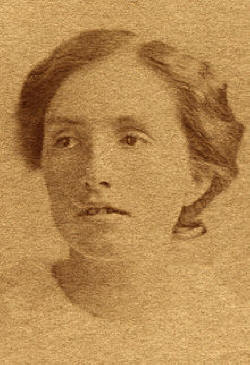

Queer Places:
Riensberg Cemetery
Bremen, Stadtgemeinde Bremen, Bremen, Germany
 Elisabeth
Noltenius (born January 24, 1888 in Bremen , † February 22, 1964 in
Bremen) was a German painter and graphic artist who gained fame
particularly as a portrait artist .
Elisabeth
Noltenius (born January 24, 1888 in Bremen , † February 22, 1964 in
Bremen) was a German painter and graphic artist who gained fame
particularly as a portrait artist .
Elisabeth Noltenius was the oldest of a total of four children of the lawyer Eberhard Noltenius and his wife Sophie Schwab (granddaughter of the writer Gustav Schwab ). [1]
At the age of 20 she went to the arts and crafts school in Bremen until she graduated as a drawing teacher in 1910. At the same time, she studied the technique and art of etching with Hans am Ende in Worpswede, and later plastic modeling with Clara Rilke-Westhoff . From 1911 to 1914, Noltenius studied at the women's academy in Munich with her friend Dora Bromberger in order to discover color alongside graphics and plastic. During and after the drawing teacher training from 1908 to 1916, Noltenius developed her black and white design in coal, lead and etchings. It remained realistic in style, close to Art Nouveau.
Most of the First World War was used by Noltenius to study art in Munich with Ernst Burmester, Daniel Wohlgemut and Albert Weisgerber , founding member and president of the Munich New Secession . Like her sister Gretel, Noltenius volunteered for a time as a nurse helper in a military hospital for wounded soldiers. Gretel became infected and died of typhoid . The Noltenius brothers Hans and Walter fell as volunteers in 1915 and 1917.
In 1919, her fiance Friedrich Wilhelm von Seidlitz was shot as a hostage during the Munich Council Republic . Her father died at the same time. Noltenius was able to escape from the contested Munich to Bremen for the funeral. The family's fortune was lost. Noltenius saw himself in need to feed her surviving mother.
Her reputation as a portrait artist spread in Germany and Switzerland. She also knew how to have preschool children to sit still by playing the puppet theater with the left hand, the brush in the right. The portrait was Noltenius' bread profession. Her passion was landscape and still life painting. While Noltenius had a studio in Bremen, she had been going to the countryside again and again since the 1920s. She wanted "her own Worpswede" and found the village of Meyenburg , which was characterized by peat cutting and agriculture . There Noltenius painted landscapes , interiors , still lifes and people at work.
Noltenius searched for color and the foreign abroad several times: in 1923 and 1938 she traveled to Italy, 1927 to Spain, 1930 to Hungary, 1935 to Norway. Similar to Paula Modersohn-Becker , whom she adored, Noltenius moved to Paris to study again , where she studied with André Lhote , Lucien Simon and Eugen Spiro in 1931/1932 and in the museums in particular works by Vincent van Gogh , Paul Cézanne , Paul Gauguin and of the abstract .
Noltenius was a member of GEDOK ( Society of German and Austrian Artists ), the Professional Association of Fine Artists and the Society for Urban Development . In addition to her own painting, she regularly gave drawing lessons and lectures on art and architecture-historical topics.
When the National Socialists enforced the Aryan paragraphs in 1933, in 1933, 1934 and 1935 she organized three solo exhibitions of the works of her painter friend Dora Bromberger against the ban on exhibiting Jewish artists. In 1935 she tried to prevent her deportation to the Minsk ghetto by speaking to the Gestapo . [2]
From 1933 to 1945, the works of many colleagues were considered " degenerate art ". In spite of their ostracism, persecution and prohibition of work, Noltenius was initially not prevented from being influenced by her French teachers and Expressionism . However, after she had committed herself to the exhibitions for Dora Bromberger and opposed the Gestapo, she was no longer able to show her works in public after a last exhibition in 1936. [3]
Now she had to be careful, if she didn't want to risk being banned too. Since she lived from painting, no influence of the so-called "degenerates" (like Paula Becker-Modersohn, her French teachers or the Expressionists) should be visible in her works. Had the Gestapo searched her house, her diaries with the openly opposed opposition to Hitler and his movement would have taken her to the concentration camp. [4]
The mother Sophie Noltenius died in 1943, and in 1944 Noltenius' studio in Bremen was hit by bombs, destroying most of her pictures. After the war, she built her own small studio in Meyenburg in 1949.
Between 1921 and 1953 pictures of Noltenius were shown in public collective exhibitions in Bremen, Munich and Dresden . In 1922 and 1923 the Worpswede artist press printed Noltenius' etchings. After all, she was so recognized that from 1930 to 1958 she had solo exhibitions in Böttcherstraße , in the Graphisches Kabinett Bremen and in the Bremen Kunsthalle , as well as after her death in Worpswede and in the Overbeck Museum in Bremen.
My published books: